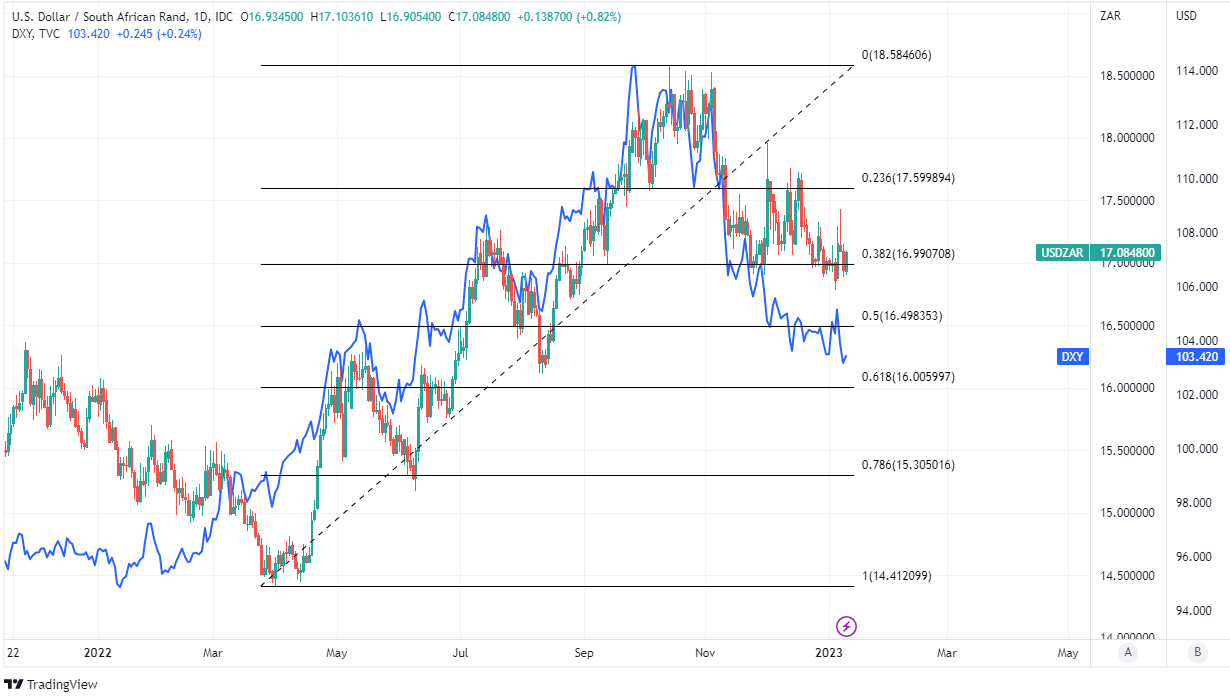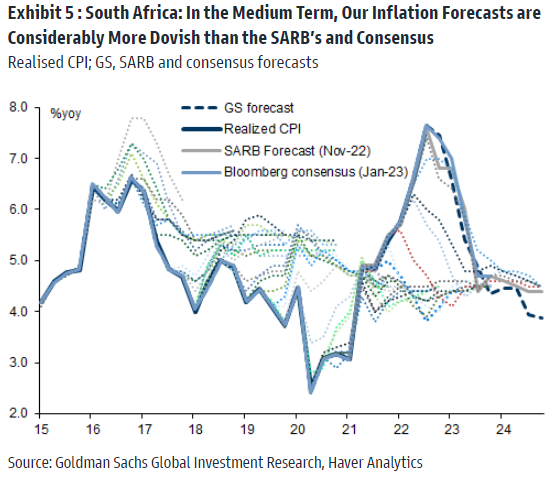Directional Risk Tilted Higher for Pound to Rand Rate Short-term
- Written by: James Skinner
-
- GBP/ZAR supported near 20.31 with upside risk
- Rand underperformance aiding GBP/ZAR rebound
- U.S. inflation & Fed outlook dominate short-term

Image © Adobe Images
The Pound to Rand exchange rate has reversed its New Year losses and with the South African currency emerging as a tentative underperformer in the G20 bucket thus far Sterling could now be in the early stage of an attempted recovery toward its December highs.
South Africa's Rand had made a strong start to the year earlier in January but last week's losses left it trailing behind most counterparts in the G20 grouping with only the Japanese Yen and Norwegian Krone having fared worse.
Sterling has, meanwhile, risen against around half of the same grouping with the aid of widespread losses for U.S. exchange rates that have left the Dollar also languishing near the bottom of the bucket for the year.
This has halted a month-long run of losses that had pushed the Pound to Rand pair to lows around 20.20 last week and left Sterling appearing poised for an attempted recovery, although much about the outlook is yet to be determined by Thursday's U.S. inflation figures for December.
"The rand has recovered from the highs posted last week as the effects of talk from the ruling party regarding the SARB mandate and US data saw the local unit trading to a high above 17,40," says Walter de Wett, a fixed income and currency strategist at Nedbank.
 Above: Pound to Rand rate shown at daily intervals with Fibonacci retracements of September recovery indicating possible areas of technical support for Sterling. Click image for closer inspection.
Above: Pound to Rand rate shown at daily intervals with Fibonacci retracements of September recovery indicating possible areas of technical support for Sterling. Click image for closer inspection.
Live GBP/ZAR Money Transfer Exchange Rate Checker | ||
Live Market Rate: | get quick quote | |
Corpay: | ||
Banks: Median Low | ||
Banks: Median High | ||
These data are based on the spread surveyed in a recent survey conducted for Pound Sterling Live by The Money Cloud. | ||
"All eyes will now be on the inflation report in the US on Thursday as well as the big US banks’ earnings, which should start to hit the tapes in the latter half of the week" de Wett adds after tipping USD/ZAR for a possible fall back toward the 16.75 area on Tuesday.
Consensus is banking on a third successive decline for U.S. inflation being announced on Thursday, which would do little to discourage the market from underpricing the interest rate forecasts of Federal Reserve (Fed) policymakers.
That could also encourage further weakness in U.S. Dollar exchange rates, which has not benefited the Rand to the same extent as Sterling in recent weeks, though there is also the prospect of a surprise increase in U.S. inflation that would have uncertain implications for GBP/ZAR.
The Rand has not benefited much from recent declines by the Dollar and it remains to be seen how it would fare in the event of a Dollar rebound.
"A drop to 6.5% y/y from 7.1% y/y is expected, down from 9.1% y/y in June last year, as energy costs (and commodities prices in general) waned, although US services price pressure are still rising. A higher outcome would weaken the rand further," says Annabel Bishop, chief economist at Investec.
 Above: USD/ZAR shown at daily intervals with Fibonacci retracements of March 2022 rally indicating possible areas of technical support, and featured alongside U.S. Dollar Index. Click image for closer inspection. If you are looking to protect or boost your international payment budget you could consider securing today's rate for use in the future, or set an order for your ideal rate when it is achieved, more information can be found here.
Above: USD/ZAR shown at daily intervals with Fibonacci retracements of March 2022 rally indicating possible areas of technical support, and featured alongside U.S. Dollar Index. Click image for closer inspection. If you are looking to protect or boost your international payment budget you could consider securing today's rate for use in the future, or set an order for your ideal rate when it is achieved, more information can be found here.
"A number of US data readings came out weaker than expected last month, adding to hopes that the US would stick to a slowing rate hike trajectory, which would weaken the dollar, although volatility is likely in the data, and so for the rand," Bishop writes in a Monday research briefing.
Thursday's U.S. inflation figures are likely to influence the size of the next interest rate step from the Federal Reserve at the end of January and, specifically, whether the bank elects in favour of another half percentage point increase or if it scales down the size of its policy steps for a second time.
A shift to a one-quarter point increase would be a likely dampener for the Dollar and a filip for other currencies, though much about the outlook for the Rand beyond the current week also depends on South African inflation data due out next Wednesday and on the performance of the economy this year.
"Against the backdrop of weak growth and the continued absence of demand-side pressures on prices, and with the policy stance on the SARB’s estimates at or slightly above neutral, we see scope for a monetary policy pivot to rate cuts later this year," says Andrew Matheny, an economist at Goldman Sachs.
"In the medium term, our inflation forecasts are considerably more dovish than the SARB’s and consensus, driven by a view that a large persistent negative output gap will continue to keep demand-side price pressures subdued," Matheny writes in a January research briefing.
 Source: Goldman Sachs Global Investment Research.
Source: Goldman Sachs Global Investment Research.



